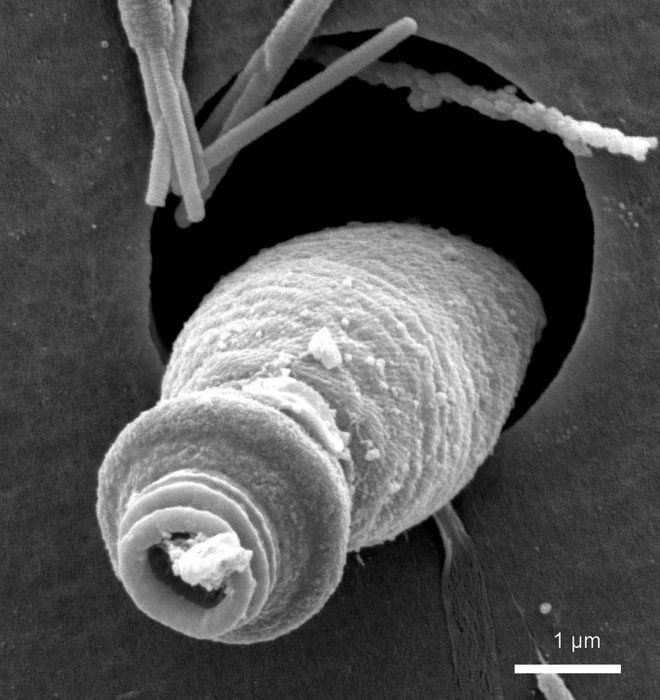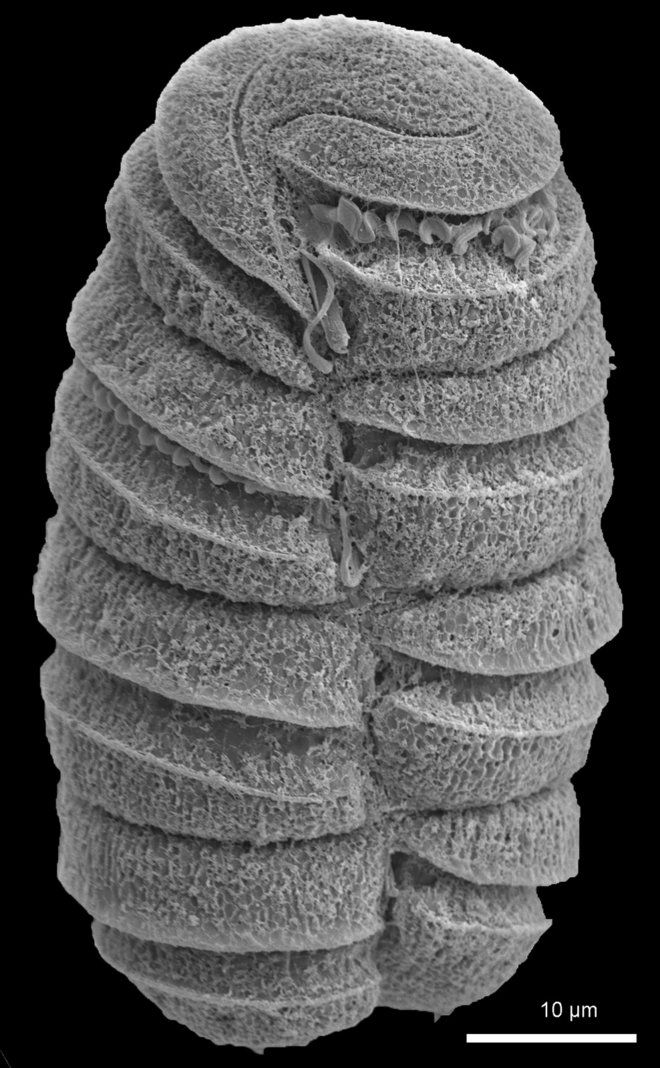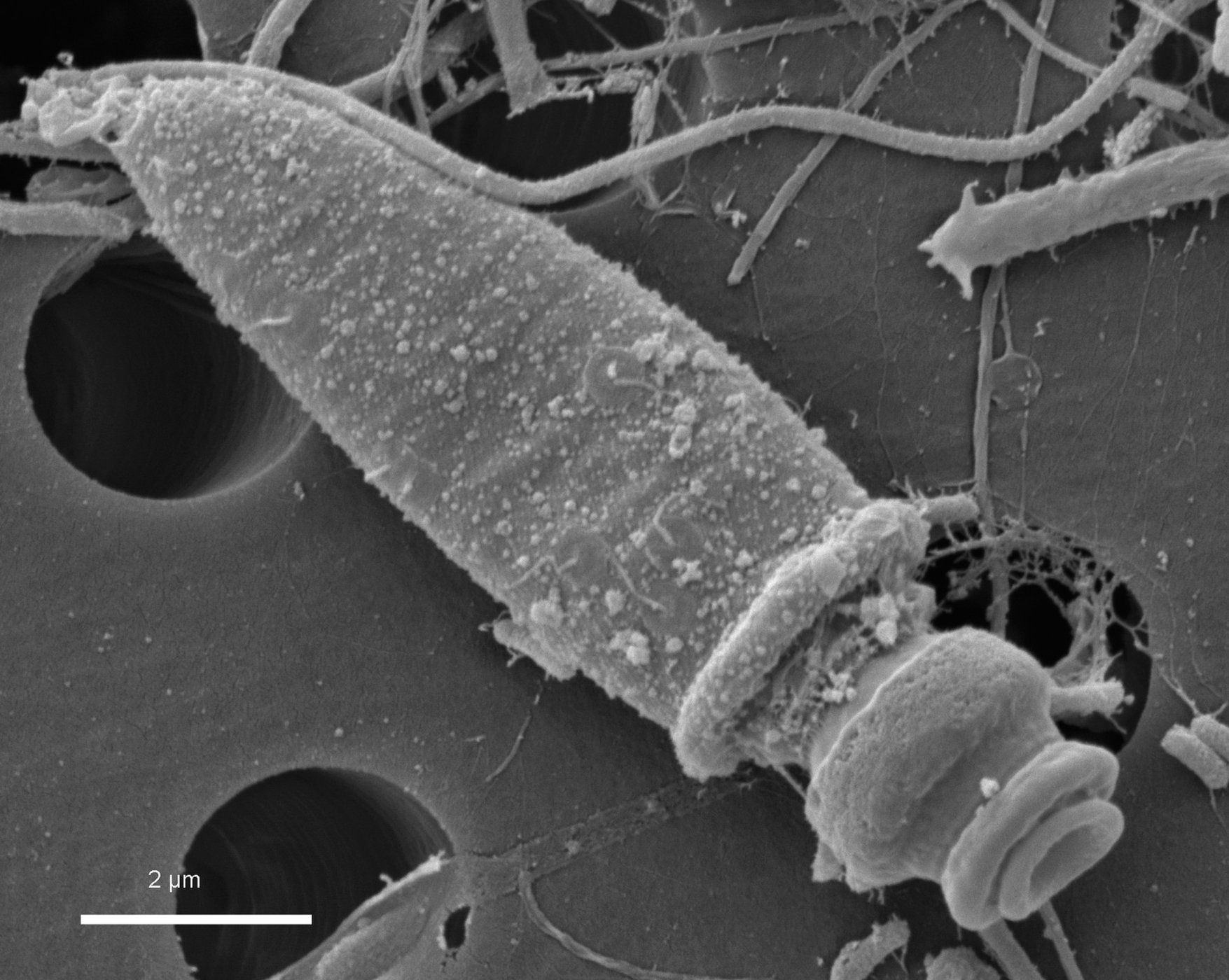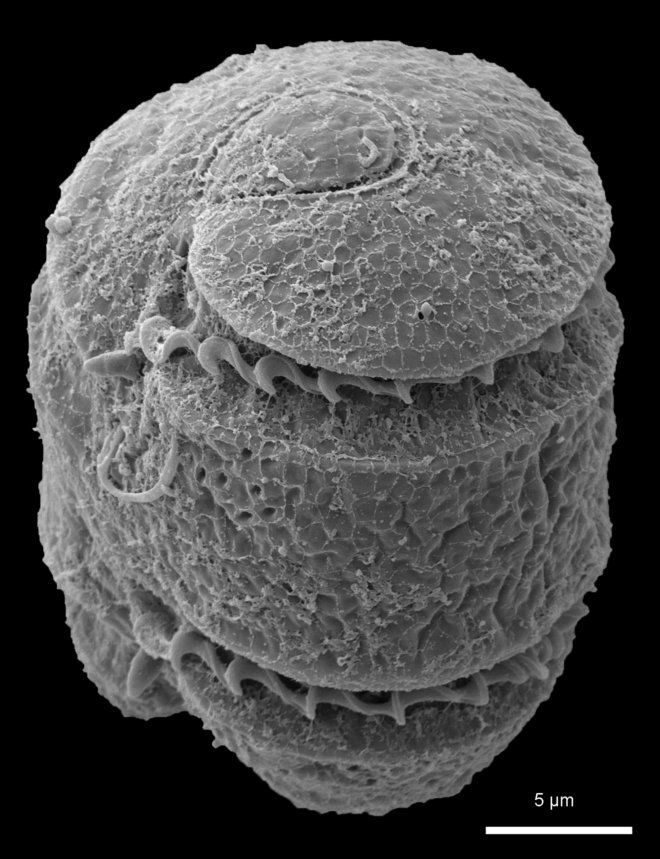Shooting plankton: tiny organisms wield impressive artillery

Single-celled marine organisms shoot their prey using nets like Spider-Man and Gatling miniature machine guns .
Dinoflagellates called Nematodinium and Polykrikos are microscopic plankton, floating on the surface of creatures that whales swallow in tons. But among the dinoflagellates mentioned above, one of the protist types, life is filled with its own drama. They are hunters eating other dinoflagellates, for which they have armor, microscopic military equipment, and even chemical weapons.
The new study found that Nematodinium and related dinoflagellates invented their own type of weapon: and although they are very similar to jellyfish stinging cells, these structures evolved independently, possibly because the arms race took place in the world of plankton.
')

“They could be ocean policemen,” said Gregory Havelis, a researcher, postdoc at Arizona State University, who led the study of dinoflagellates when he worked at the University of British Columbia. "They have a ridiculous amount of equipment to achieve the goals."
The coolest cells
Dinoflagellates are “objectively speaking, the coolest cells,” said Havelis. Prior to this, he had already discovered that Nematodinium has an eye spot with a lens and a photosensitive pigment; This means that, despite the unicellularity, this organism can see in some sense.

An unusual set of weapons Nematodinium called nematocysts. Havelis and colleagues used a scanning electron microscope to obtain images of nematocysts of this, as well as another well-armed type of dinoflagellates, Polykrikos kofoidii.
They also shot for the first time a shot from a Polykrikos kofoidii weapon.
They saw the work of quite complex structures: Nematodinium has nematocysts assembled in the form of rosettes and looks like a Gatling multi-barreled machine gun.

“No one has yet seen these creatures hunt, since Nematodinium is extremely rare,” said Havelis. “Unlike the Gatling machine gun, they most likely shoot all of these capsules at the same time.”
And P. kofoidii is still more strange. These dinoflagellates place the capsules on their surface, and each of them is provided with a finger-like protrusion, teniocysts. When she meets with the victim, the teniocysts explode, firing, according to Havelis, a sticky substance resembling the spider-man's web. The explosion causes the capsule, nematocysts, to shoot a tube twisted into a spiral, at the end of which there is a cusp in the form of a dagger, a stylet. The stylet penetrates the victim, the coil is absorbed, and the victim is tied to a dinoflagellate predator with a kind of tug.
“They use the tug exactly as if pulling up a fish caught by a harpoon,” says Havelis.
And then it's time to eat.

Polykrikos kofoidii
Independent evolution
Stinging sea animals, jellyfish and other stinging animals also have nematocysts in their arsenal. Because of this, says Havelis, there have long been theories that dinoflagellates and promenades came from a distant common relative who had an impressive defense arsenal. Another possibility is that dinoflagellates and strapping exchanged several genes. One type of dinoflagellates lives in symbiosis with corals, which also belong to the coral, which makes the exchange of genes possible.
Havelis and his colleagues studied the hydra genome and compared its genes responsible for nematocysts with single-cell genes. They also compared the proteins that the strappers had with those with dinoflagellates.
And they found no links. Havelis says that the genes that build nematocysts in dinoflagellates are completely different from the genes that do this in the protruding. New discoveries, published in late March in the journal Science Advances, mean that the shovel and dinoflagellates themselves received similar weapons as a result of evolution.
Havelis suspects that dinoflagellates have developed such sophisticated hunting equipment with the help of evolution, because their prey is dangerous for them - these are other dinoflagellates. Polykrikos, for example, devours plankton, which is responsible for toxic red tides . Protists who feed on bacteria do not need a special weapon, as Havelis says, but it is possible that in dinoflagellates, predators and victims are pursuing an arms race for the purpose of survival.
They and the team are now engaged in testing this hypothesis, figuring out whether dinoflagellates will produce more “tools” if their opposition turns out to be better armed. If so, the number of nematocysts produced will have to depend on which company they are in.
"Now, in fact, microbial battles take place in cells, where we encounter different types," says Havelis.
Source: https://habr.com/ru/post/403487/
All Articles